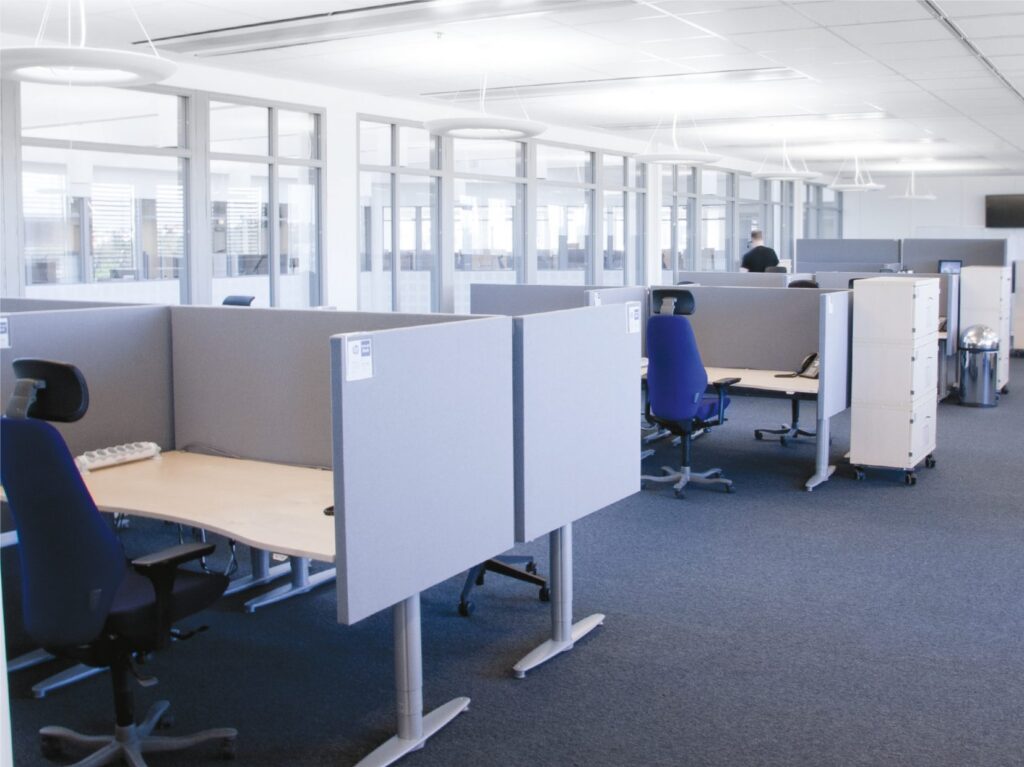It might sound strange. Especially coming from someone who specializes in reducing noise, but today we’d like to talk to you about sound masking. Or more specifically, we want to talk about combining sound absorption and sound masking. Because that’s how we can create an even better work environment—one that makes both your colleagues and your bottom line happier.

What is sound masking?
But let’s start from the beginning. If you’re not already familiar with sound masking, it’s an advanced technique that generates a soft, subtle background noise through specially designed speakers. This low-level noise creates a kind of constant, pleasant sound blanket that helps reduce disruptive sounds.
Now you might be thinking, “But isn’t the biggest problem with an open office layout that it gets way too noisy?” In fact, a completely silent office can actually have the opposite effect. When you remove all background hum, you’ll end up hearing every creak and whisper far more clearly.
How does it work?
The key to a great work environment lies in combining sound absorption and sound masking. It’s a bit like sunshine and ice cream. Both are wonderful on their own, but together they’re unbeatable. Sound absorbers reduce noise and echo, while masking uses background noise to cover up unwanted distractions. Together, they help control the sound environment, making it not only more pleasant but also more productive. In fact, several studies have shown that employees can be 10 to 25 percent more effective in a well-designed acoustic environment.
Can sound masking protect sensitive information?
Reducing noise doesn’t just boost productivity—it can also be crucial in many situations. If you work with sensitive information, having the wrong conversation in the wrong place can lead to serious consequences. Since sound masking compresses standout sounds, it also limits how far conversations travel, both in open spaces and between rooms. This helps keep private conversations truly private—and saves you from being distracted by someone else’s.
How complicated is it?
Okay, diving into the technical side: the sound from a masking system works much like airflow. It doesn’t contain any recognizable information, which means your ears pick it up, but your brain doesn’t register or get stressed by it. A smart sensor constantly measures the room’s noise levels and automatically adjusts the masking volume throughout the day.
It might sound complex, but while the technology behind it is advanced, the final product is incredibly easy to use.
Who benefits from sound masking and sound absorption?
Call centers
In spaces where many people share a room, the combo ensures that chatter and distractions don’t spread.
Offices
Perfect for open-plan offices where you want to create calm and increase productivity.
Businesses handling sensitive information, like healthcare and insurance companies
The combination is ideal for preventing personal or confidential information from reaching the wrong ears.
Hotels
In hotel settings, sound masking and absorption can enhance privacy between rooms, in lobbies, and in conference areas.


